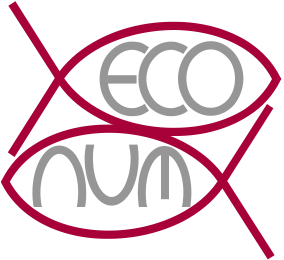Ecophysiology of hermatypic corals
We study various species of hermatypic scleractinians, more precisely, Pocilloporidae (Stylophora pistillata, Pocillopora damicornis and Seriatopora hystrix) and Acroporidae (Acropora muricata, A. digitifera, A. tumida, A. millepora, …) in artificial mesocosms.

We are particularly interested by the growth of coral colonies and their skelettogenesis according to the fluctuation of environmental parameters. We study, of course, this growth in relationship with global climatic changes (temperature increase, ocean acidification) and eutrophication. But we also study this growth in a broader framework aiming to understand the major ecological properties of a coral holobiont.
Hermatypic scleractinians are key organisms as coral reef builders; Coral reefs form one of the most diverse and productive ecosystems on our planet. Hermatypic corals live in symbiosis with a dinoflagellate (Symbiodinium spp) present inside the cells of their oral gastrodermis and provide a large part of the energy required by the coral through photosynthesis, which greatly enhances their potential to precipitate calcium carbonate in their skeleton. On the other hand, recent studies reveal the importance of other micro-organisms in the coral mucus. Thus, the coral holobiont is a complex entity with multiple symbiotic associations. It is on the final balance and ecological response of these complex interactions that our research group is targeting its research activity. The ecophysiology of this holobiont is studied in a specially designed experimental device: a new kind of chemostat.
Our scientific publications relating to this research topic are collected in the ULB-UMONS institutional database DI-Fusion .
PhD and Master Theses
PhD and Master theses and premaster placements in our laboratory in relationship with corals:
- Moulin, L., (in course). Impact de l’acidification sur la bioérosion des coraux hermatypiques par les oursins: étude en mésocosmes. PhD Thesis at ULB, mentor: Ph. Dubois, co-mentor at UMONS: Ph. Grosjean.
- Leblud, J., (in course). Plasticité écophysiologique des holobiontes coralliens en relation avec les grands changements climatiques: étude en chemostats. PhD Thesis at UMONS, mentor: Ph. Grosjean.
- Anzalone, L., (in course). Effet de l’acidification des océans sur la régulation acide-base du liquide coelomique chez l’oursin tropical Echinometra mathaei. Master Thesis at UMONS, mentor: Ph. Grosjean.
- Decruyenaere, L., (in course). Mécanismes de refixation de colonies d’_Acropora formosa__. Master Thesis at UMONS, mentors: Ph. Grosjean & P. Flammang.
- Vastrade, M., (in course). Modifications post-blanchissement du corail hermatypique Seriatopora hystrix en relation avec l’augmentation de la pCO2: aspects écophysiologiques et cellulaires. Master Thesis at UMONS, mentor: Ph. Grosjean, co-mentor at ULG: J.-C. Plumier.
- Dudome, V., 2011. Rendement photosynthétique chez les zooxanthelles en association avec un scléractiniaire Seriatopora hystrix (Dana, 1846). Master Thesis at UMONS, mentor: Ph. Grosjean, 72pp.
- Maloux, H., 2011. Assimilation des nutriments par le scléractiniaire Seriatopora hystrix. Master Thesis at UMONS, mentor: Ph. Grosjean, 89pp.
- Roosa, S., 2009. Communautés bactériennes épibiontiques du scléractiniaire Seriatopora hystrix : impact des nutriments. Master Thesis at UMH, mentor: Ph. Grosjean, co-mentor: D. Gillan, 133pp.
- Derock J., Roosa, S. & Vanderplanck, M., 2008. Etude de coraux hermatypiques. Premaster work at UMH, mentor: Ph. Grosjean, 71pp.
- Dendoncker, F., 2007. Nanocultures de coraux hermatypiques. Master Thesis at UMH, mentor: Ph. Grosjean, 83pp.
- Fiankan, D., 2007. Croissance de coraux hermatypiques en microcosme. Master Thesis at ULB, mentors: M. Jangoux & Ph. Grosjean, 72pp.
- Galvez Lopez, D., 2006. Hermatypic corals : Their biology, living environment and the techniques for their study in artificial micro/mesocosms. Master Thesis at UMH, mentor: Ph. Grosjean, 43pp.
Events
After a first meeting of Belgian scientists working on corals or coral reefs, organized at ULG in 2009, the “Second Belgian Coral Meeting” was organized at UMONS in February 2011 by our laboratory. The meeting programme is downloadable here.
Where do our corals come from ? All the coral frags we use in our experiments come from our own production, inside our artificial mesocosms. Mother colonies were imported with CITES certificate, and then, they are grown and fragmented to produce clones perfectly adapted to the artificial environment of our mesocosms. Their growth is outstanding: up to 1.5%/day in skeleton growth for Seriatopora hystrix.
